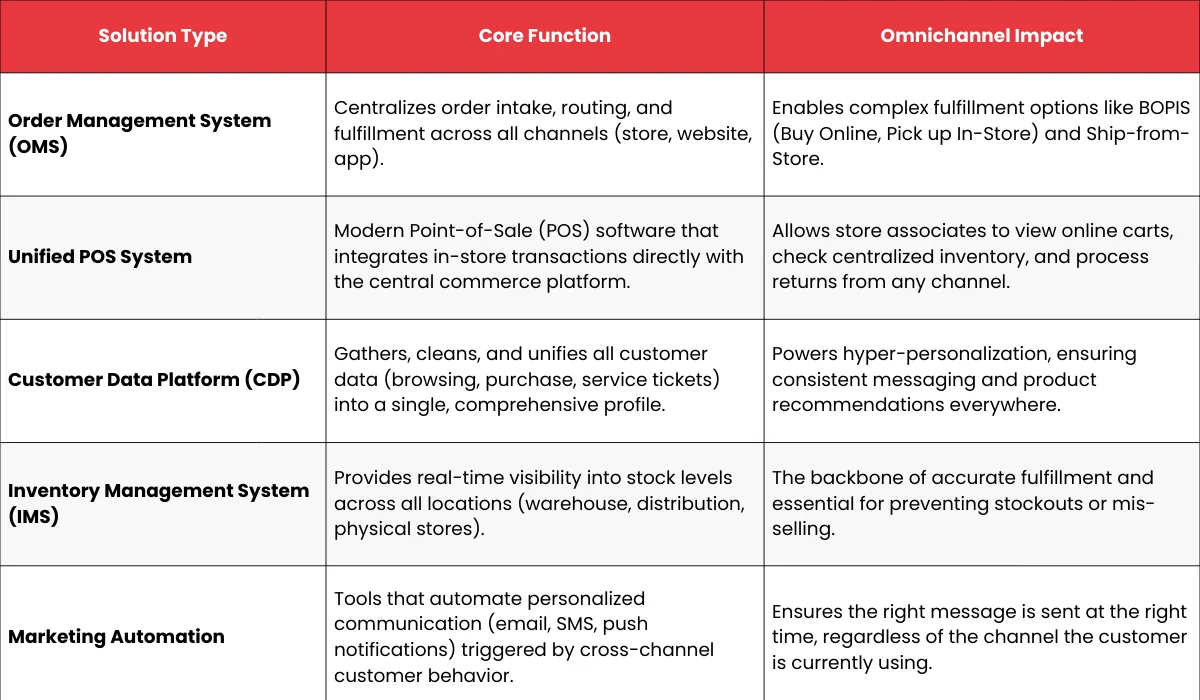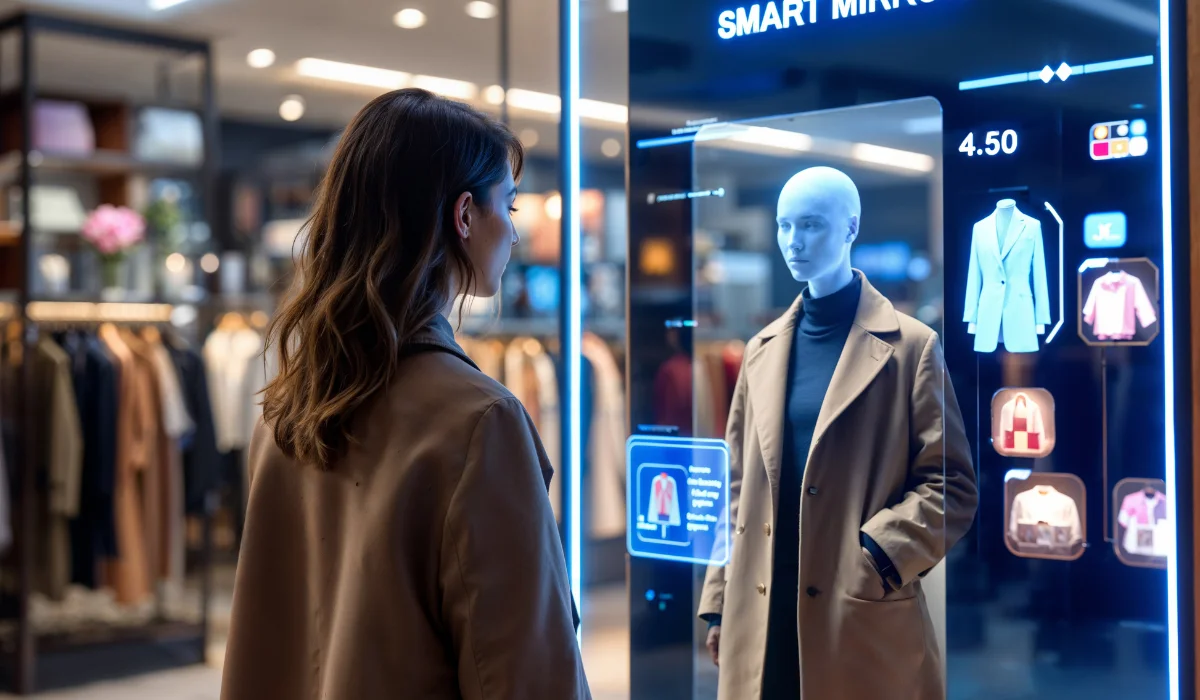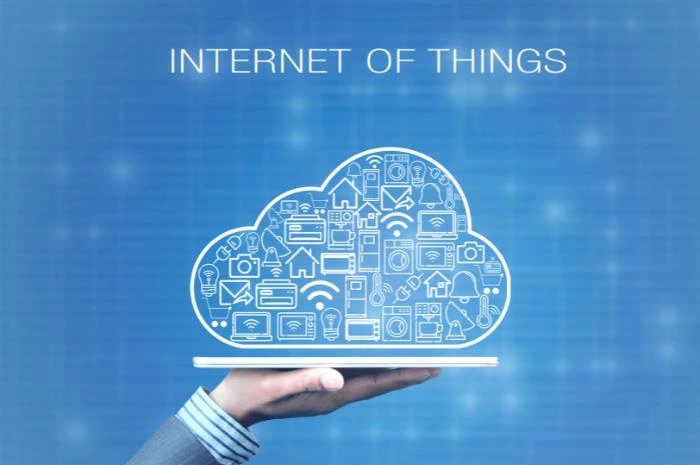The retail landscape has changed dramatically. Marketplaces now dominate the industry. They offer a huge selection, low prices, and extreme convenience. This reality forces independent retailers to compete fiercely for customer loyalty and margins.
How do you beat giants that offer everything, everywhere?
The most effective solution is omnichannel commerce. This strategy is the blueprint for success. It creates one unified shopping journey across all channels: stores, websites, apps, and social media. But what is omnichannel commerce, its benefits, and how can retailers start their journey? We will discuss everything in the post.
Why Are Marketplaces Dominating Retail Today?
Marketplaces dominate retail today due to their overwhelming focus on convenience, aggressive pricing, and established customer trust. They appeal to the fundamental human desire for simplicity and speed.
Retailers struggle to compete with this scale for three main reasons:
1. Ultimate Convenience
Marketplaces aggregate millions of products on a single platform. This simplifies the customer journey instantly. Features like one-click purchasing and easy, fast returns set a high standard that is difficult for single brands to match.
2. The Price Factor
Due to massive purchase volume and highly efficient logistics networks, marketplaces often offer lower prices. They attract consumers who are price-sensitive, forcing smaller retailers to either reduce margins or lose the sale.
3. Trust and Reliability
Established marketplaces have built decades of brand trust. Their fulfillment processes are predictable. Their customer service systems are robust. Consumers rely on this reliability for a risk-free transaction.
The Retailer Pain Points
This dominance creates major problems for individual retailers:
- Eroding Margins: Marketplaces charge high commissions for sales, cutting into profit.
- Reduced Visibility: Your products compete with millions of others.
- Loss of Customer Data: The marketplace controls access to the valuable data on who bought your product and why.
This requires a direct, customer-centric omnichannel retail strategy to recapture control.
What Makes Omnichannel a Powerful Alternative?

Omnichannel commerce is a unified approach in which all sales channels work together to create a single, seamless customer journey. It goes far beyond simply being “multi-channel.”
The difference is crucial:
- Multi-channel: Retailer uses several independent channels (store, website, app). Data and experiences are often siloed.
- Omnichannel: All channels are integrated. The customer experience is continuous and fluid.
The Unified Experience
In omnichannel, customer interaction data is synchronized in real time. This includes:
- Loyalty Status: Points earned online are usable instantly in-store.
- Cart Contents: Items saved on a mobile app appear on the desktop site.
- Purchase History: Store associates can see past online orders.
- Preferences: Personalized recommendations are consistent across the board.
This unified approach ensures a hassle-free interaction. It doesn’t matter where the customer starts or finishes their shopping; the brand recognizes them every step of the way.
How Does Omnichannel Commerce Give Retailers a Competitive Edge?

Omnichannel retail strategy gives retailers a competitive edge by fostering deep, direct customer relationships and leveraging physical assets. This is something large marketplaces cannot easily replicate.
Marketplaces focus on transaction volume. Retailers using omnichannel focus on lifetime value (CLV).
Key Competitive Advantages
Creating a seamless omnichannel customer experience is the core component for competing effectively:
- Direct Customer Relationships: You own all the data. This proprietary information,browsing, purchasing, and feedback,is invaluable. It allows you to move beyond generic service.
- Hyper-Personalization: Unified data enables a highly relevant service. You can deliver tailored promotions, targeted product recommendations, and content that precisely matches the customer’s past behavior.
- Physical Store Integration (BOPIS): Services like Click-and-Collect (Buy Online, Pick up In-Store) blend the speed of online ordering with the immediacy of physical retail. Stores become local fulfillment centers, significantly reducing last-mile delivery costs and time.
- Social and Mobile Commerce: Integrating shopping directly into apps (mobile commerce) and social platforms (social commerce) shortens the path to purchase. This meets the customer where they spend their time.
What Are the Business Benefits of Omnichannel Commerce?
Adopting a robust omnichannel framework translates into clear financial and strategic advantages for retailers, directly boosting the bottom line.
Key Financial and Strategic Benefits
- Higher Profit Margins: Selling through owned channels (website, app, store) eliminates the commission fees paid to marketplaces. This means a higher percentage of the revenue stays with the brand.
- Enhanced Customer Lifetime Value (CLV): Omnichannel customers are more engaged. Studies show that these customers typically have a 30% higher lifetime value than those who shop using only one channel. They also purchase more frequently.
- Complete Brand Control: Unlike the competitive, crowded marketplace environment, your owned omnichannel experience allows you total control. You manage the visuals, the narrative, and the service quality, protecting your brand equity.
- Operational Efficiency: Utilizing specialized retail commerce solutions,like unified inventory management and integrated POS systems,streamlines operations. This results in fewer fulfillment errors and reduced labor costs.
Types of Omnichannel Solutions for Retailers

Omnichannel success is built on a foundation of integrated software that unifies customer data, inventory, and transactions. These are not just “nice-to-haves”; they are the essential retail commerce solutions that power a seamless experience.
Implementing the right technology stack is the most important step for an effective omnichannel retail strategy.
By investing in these integrated systems, retailers can ensure that the front-end (what the customer sees) and the back-end (operations) work in perfect harmony.
What is the Role of AI in Omnichannel Commerce?

Artificial Intelligence (AI) is the primary driver of an efficient, truly personalized omnichannel customer experience. AI turns raw, multi-channel data into actionable, automated strategies.
AI drives success in four critical areas:
1. Hyper-Personalization at Scale
AI analyzes all unified customer data: clicks, browsing, in-store history, and returns. It uses this data to predict buying intent. It then delivers dynamic, hyper-relevant product recommendations and tailored promotions across every channel, instantly.
2. Inventory Optimization
AI models accurately forecast demand across all fulfillment locations, warehouses, stores, and distribution centers. This ensures the right stock is in the right place at the right time. It minimizes stockouts and reduces costly overstocking.
3. Advanced Customer Service
AI-powered chatbots provide instant, 24/7 support across the website, mobile app, and social media. The chatbot accesses the full customer context, handling common queries efficiently and escalating complex issues seamlessly to human agents.
4. Dynamic Pricing
AI continuously monitors real-time factors: competitor prices, inventory levels, and local demand. It automatically adjusts prices dynamically. This maximizes margins while keeping the retailer competitive, a process far too sophisticated for manual execution.
How Can Retailers Start Their Omnichannel Journey?

Embarking on the omnichannel path is a strategic, phased process that begins by integrating key systems focused on immediate customer value.
Here are the crucial, actionable first steps for implementing your omnichannel retail strategy:
- Integrate Inventory Management: This is mandatory. Implement a single system where stock levels are visible and accurate across your website, app, and all physical stores. This forms the foundation for all other services.
- Launch Store Pickup (BOPIS): Quickly offer Buy Online, Pick up In-Store. This service immediately leverages your physical locations to provide speed and convenience, a major marketplace counter-attack.
- Implement Unified Analytics: Consolidate data from all sources (POS, e-commerce, app, loyalty program) into one platform. A complete, single view of the customer is essential for effective personalization and optimization.
- Embrace Social Commerce: Go beyond simple posting. Use shoppable posts and integrate your product catalog directly into platforms like Instagram and TikTok. Allow customers to purchase without ever leaving the social environment.
Is Omnichannel the Future of Retail?
Yes, omnichannel commerce is not just the future of retail; it is the essential strategy for survival and growth today.
The marketplace model excels at generic, broad convenience. The successful retail model must excel at deep personalization, speed, and trust.
By unifying your channels and leveraging your assets,especially physical stores,you transform your business. You move from being a transactional vendor to being a resilient, customer-centric brand. Omnichannel commerce is the key to protecting your margins, building unparalleled brand loyalty, and ultimately, winning the modern retail war against marketplace giants.
Start your journey to a fully integrated omnichannel retail strategy today.
FAQs
What is omnichannel commerce?
Omnichannel commerce is a retail business strategy that unifies all customer touchpoints, physical stores, websites, mobile apps, and social media into a single, cohesive, and seamless customer experience. The core goal is consistency: the customer should feel they are interacting with the same brand, regardless of the channel they are using.
What is the difference between omnichannel and omnicommerce?
While the terms are often used interchangeably, omnichannel and omnicommerce have a key difference in focus:
- Omnichannel: Focuses on the front-end customer experience. It ensures the experience and brand messaging are consistent across all consumer-facing sales channels.
- Omnicommerce: Focuses on the back-end systems and infrastructure. It requires the deep integration of systems like inventory, payments, logistics, ERP, and CRM to enable the seamless front-end experience.
Think of omnichannel as the visible, seamless customer journey, and omnicommerce as the integrated technology engine that powers it.
What are the 4 C’s of omnichannel?
The 4 C’s of Omnichannel are the four foundational principles that guide a successful strategy, shifting the focus from the product (the old 4 P’s) to the customer:
- Consistency: Ensuring the brand message, pricing, and service quality are identical across every channel.
- Contextualization: Using customer data to deliver personalized, relevant content and offers based on the customer’s real-time situation and location in their journey.
- Convenience: Making the purchasing and fulfillment process as easy as possible (e.g., Click-and-Collect, easy returns).
- Connection: Integrating all channels and backend systems so they share data and communicate flawlessly, creating a single, connected customer view.






